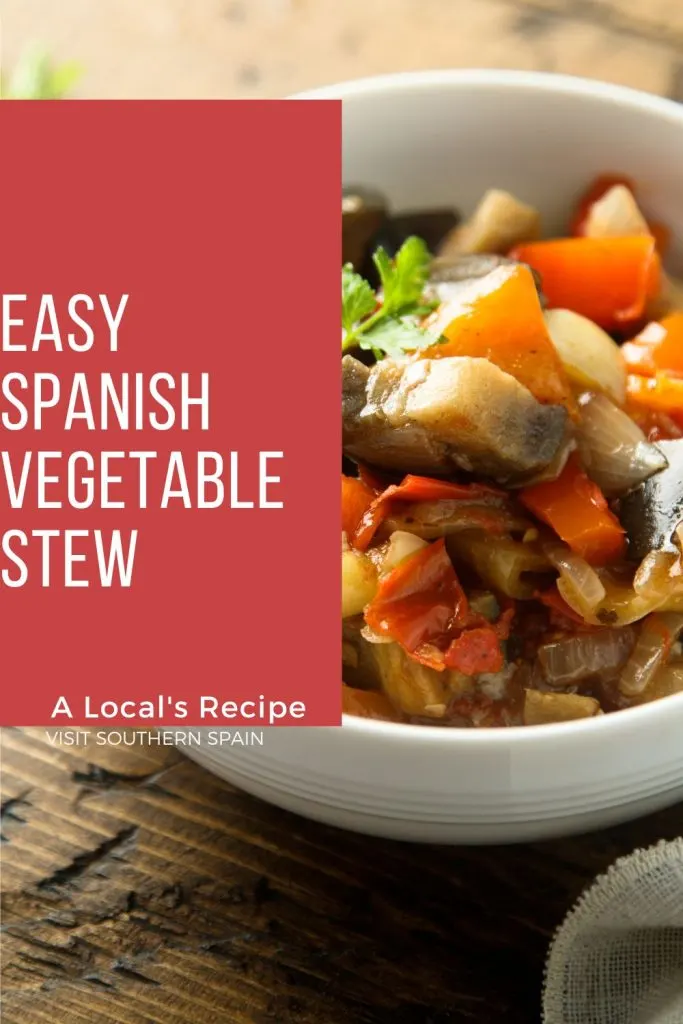On cold days we always want to eat a dish that helps us warm up, but there are times when those are usually very heavy or have a very high-fat index.
If you were looking for a healthier take on the classic stews or winter soups, then you must try and make this Spanish vegetable stew.
Not only is it an easy recipe to make, but it will help you eat more vegetables in a delicious way.
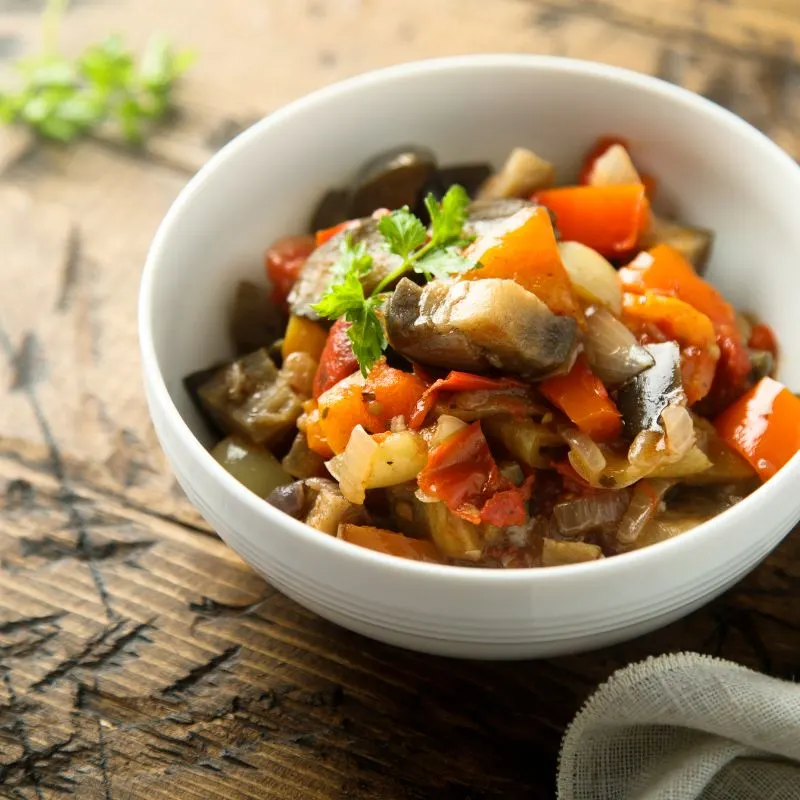
You, dear reader, support this blog. If you purchase through a link, we earn a small commission. As an Amazon Affiliate, we earn from qualifying purchases.
Continue reading this article to learn how to do this vegetarian stew, the changes you can make to the ingredients, and some extra storage and serving tips to give your own twist to the classic recipe.
Background of the Dish
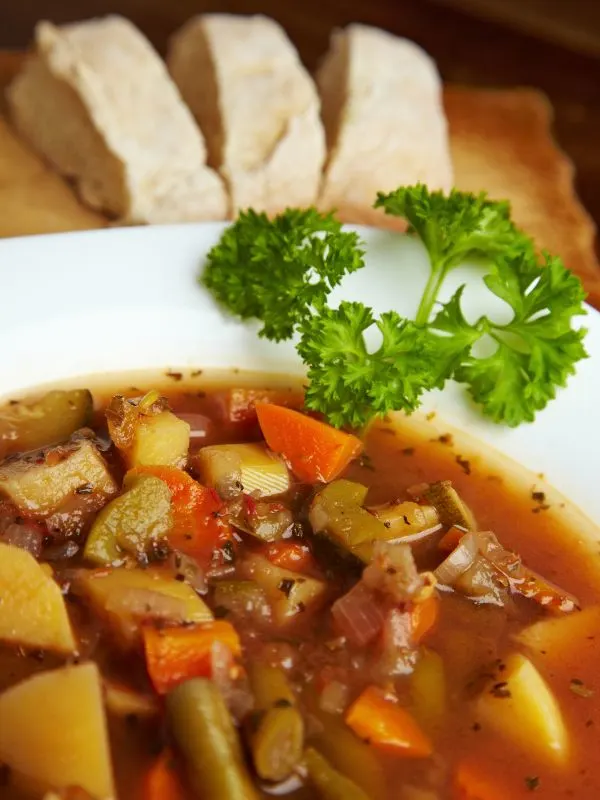
The Spanish vegetarian dishes always show that eating vegetables or healthy food doesn’t have to be less tasty than dishes with meat, and the Spanish vegetable stew is no exception.
Among all the Spanish recipes, this is the oldest because it has been cooked practically since the beginning of humanity.
Stews and soups were the first dishes humans prepared after discovering fire.
Throughout Spanish history, this vegetable stew helped people, regardless of their economic condition, to enjoy a good meal and acquire all the necessary nutrients.
That is why a pisto recipe like this Spanish vegetable stew has a special place in the hearts of all Spaniards.
Pin for Later!
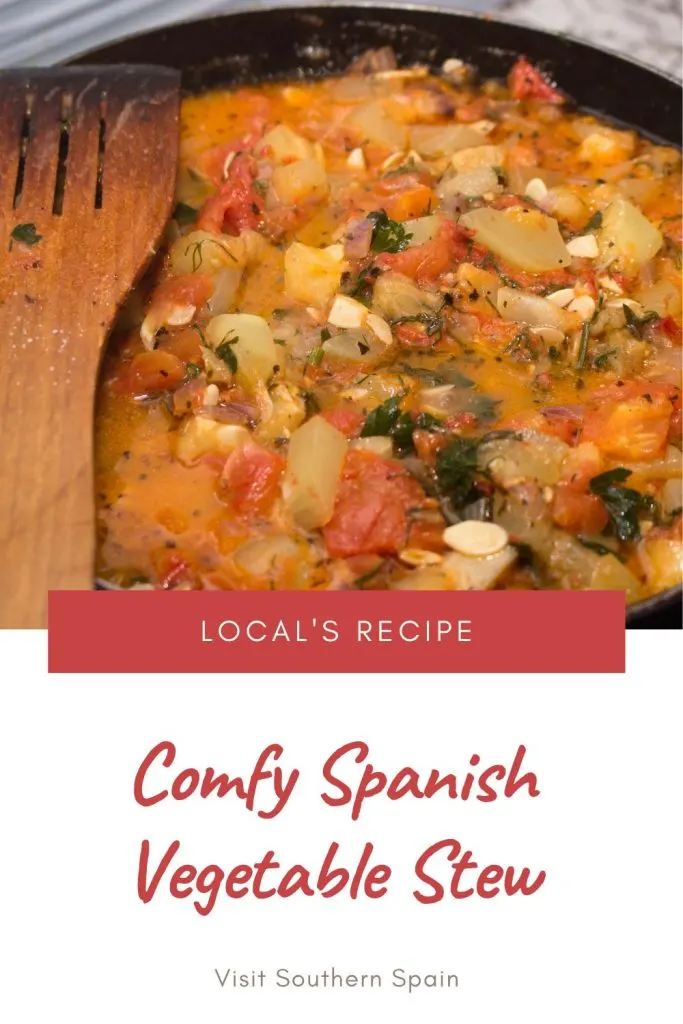
Things You’ll Need for Spanish Vegetable Stew
To make this Spanish Vegetable stew you only need water, vegetables, and a large pot.
You can also try and make other Spanish dinner foods, such as Spanish pork cheeks.
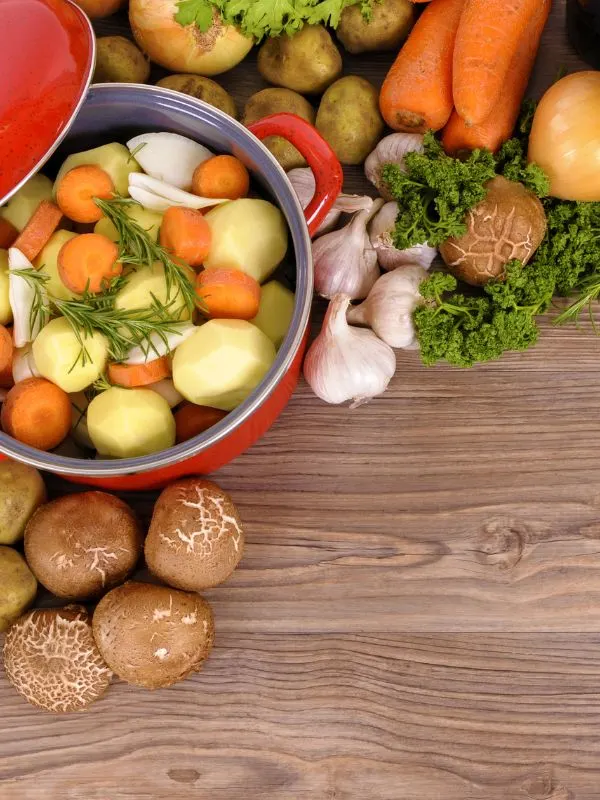
Ingredients
- 2 potatoes
- 4 artichokes
- 8 mushrooms
- 1 spring onion
- 2 carrots
- 1 green pepper
- 1 zucchini
- Salt to taste
- Ground black pepper to taste
- 1 teaspoon dried oregano
- 3 tablespoons olive oil
- 3⅓ cups (800 ml) water
How to Make Spanish Vegetable Stew – Step by Step Guide
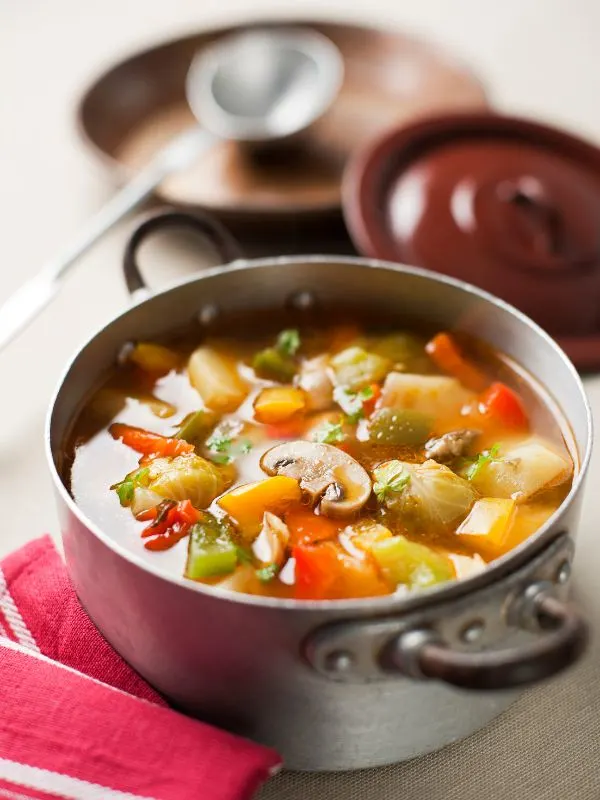
- To start making this Spanish dish, gather all the vegetables and mushrooms.
- Now, clean the artichokes by removing the outer leaves, leaving only the center.
- After that, wash and peel all the vegetables. Cut them into cubes of similar size, and cut the carrots into round slices.
- Then grab a large pot, put a splash of olive oil, and take it to the stove over medium heat. Sauté the carrots, onion, and bell pepper for 5 minutes.
- Now you can add the artichokes and dried oregano. Cook for another 3 minutes. Add the mushrooms, zucchini, and potatoes, and continue stirring and cooking for 5 minutes.
- After that time, put the water in the pot, enough to cover the vegetables. Season with salt and pepper.
- Bring it to a boil and continue cooking until every vegetable gets a tender texture.
- Then the Spanish vegetables will be ready for you to eat them. You can strain them and serve them without the water (that will be a broth that you can store and use later in other recipes), or leave the liquid in and serve it as a Spanish vegetable soup.
Substitution of Ingredients
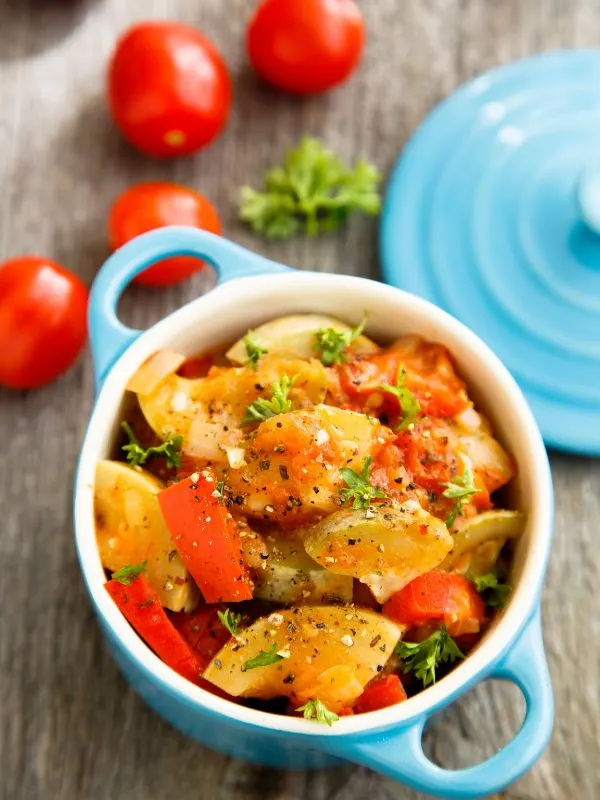
This Spanish recipe has a significant advantage: you can make as many changes as you want, and still have a delicious vegetable stew.
You can do like the typical menestra de verduras and use only seasonal vegetables or the ones you have at home, they don’t have to be the ones listed.
For a mediterranean vegetable stew with olives, olive oil brings out the flavor of the other ingredients, but you can use sunflower oil or any other type of vegetable oil as a replacement.
If you want to add other ingredients but want to eat a stew, you can take inspiration from the Spanish beef stew and the Spanish chickpea stew.
You should reduce the number of vegetables you include (onion, pepper, carrot, and potato would be enough), and add steak or chickpeas.
Tips on Serving Spanish Vegetable Stew
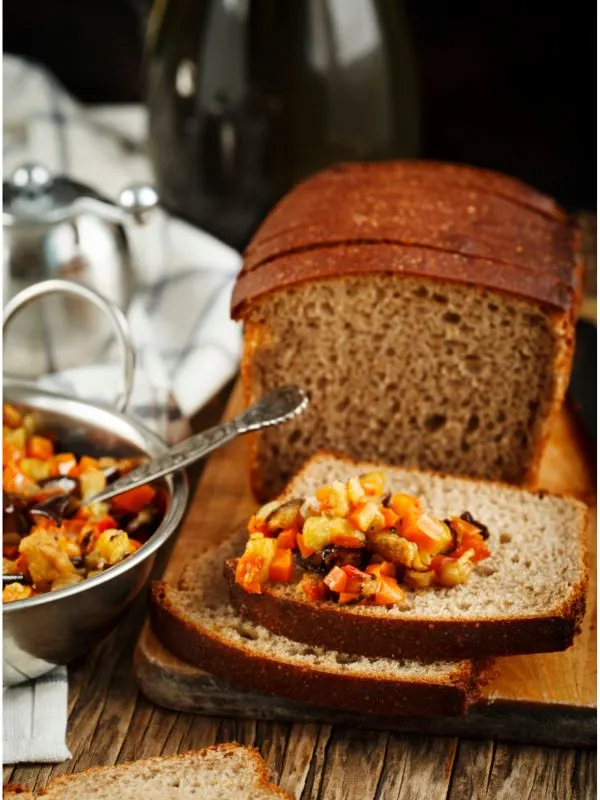
This vegetable stew is one of the most popular Spanish dinner ideas during the winter.
It is perfect to eat at night since you will not feel as heavy as if you were eating a stew with meat or with a high-fat index (like Spanish pork stew).
However, you can also eat it for lunch. It can be the main dish, or if you serve it in small bowls it is the perfect appetizer. It also serves as an accompaniment.
Something that goes well with all Spanish vegetable dishes is a bit of grated Parmesan cheese on top. You can also put a little serrano ham to give it an extra touch.
Serve it with some fresh homemade Spanish bread for a more authentic Spanish taste.
Want to try some Spanish vegetable side dishes? Try the patatas bravas, the nutritious Patatas a lo Pobre recipe, or the easy Spanish garlic mushrooms.
The Spanish stews are quite famous and if you want to give a go to other meaty stews, we encourage you to try the Spanish seafood stew, the Best Spanish Oxtail Stew, and the Best Spanish Chicken Stew.
Comforting Fabada Asturiana and the Spanish lamb stew are yet other delicious and hearty stews from Spain that are a must-try.
How to Store Spanish Vegetable Stew
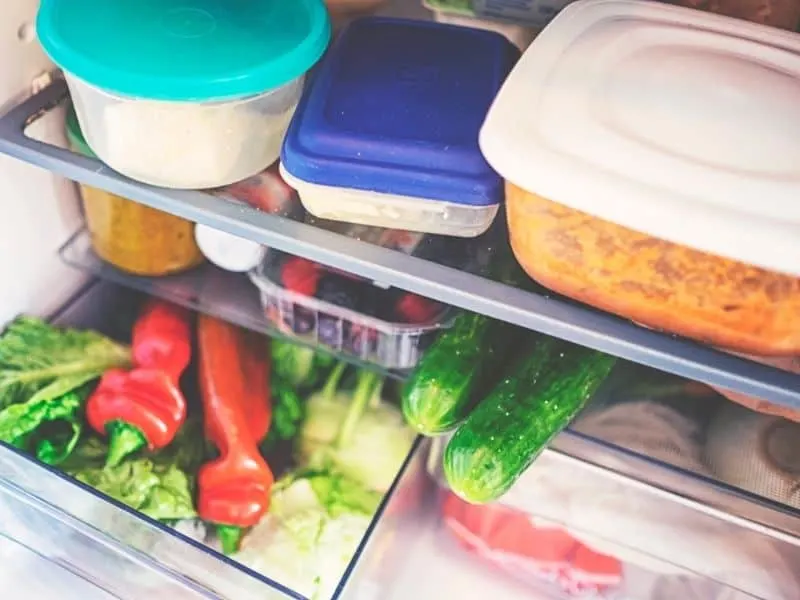
This Spanish stew will become one of your favorite recipes this winter since you can make the recipe and then save it to eat at another time.
Once you finish making the vegetable recipe, let it come to room temperature if you don’t plan on eating it right away.
Then you can serve it in a bowl and cover it with a clean plastic bag or plastic wrap.
After that, you can keep the veggie stew in the fridge for up to 3 days. If you want you can also freeze it for up to 30 days.
Then it would help if you let it thaw the night before eating it in the fridge.
Recipe Card: Spanish Vegetable Stew
Spanish Vegetable Stew Recipe
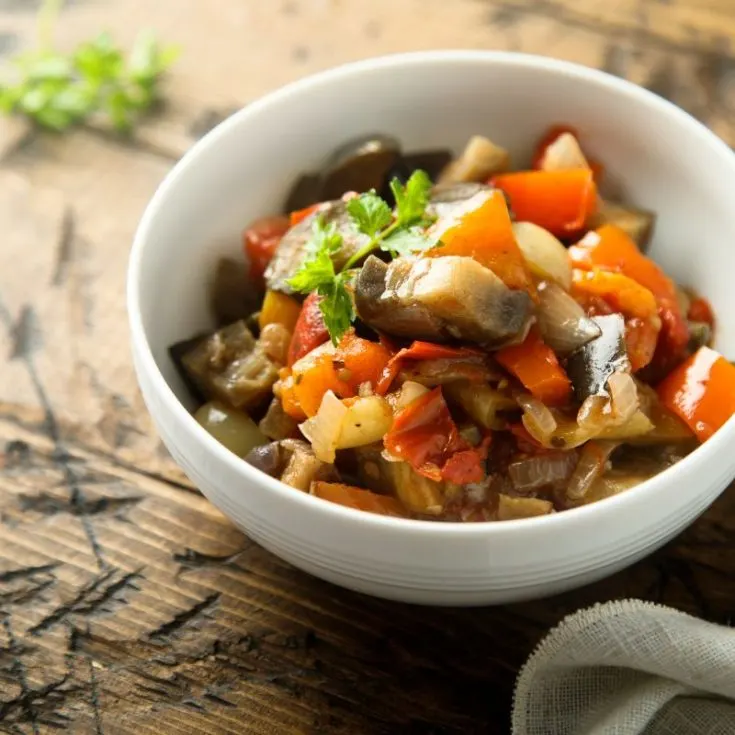
On cold days we always want to eat a dish that helps us warm up, but there are times when those are usually very heavy or have a very high-fat index.
If you were looking for a healthier take on the classic stews or winter soups, then you must try and make this Spanish vegetable stew.
Not only is it an easy recipe to make, but it will help you eat more vegetables in a delicious way.
Ingredients
- 2 potatoes
- 4 artichokes
- 8 mushrooms
- 1 spring onion
- 2 carrots
- 1 green pepper
- 1 zucchini
- Salt to taste
- Ground black pepper to taste
- 1 teaspoon dried oregano
- 3 tablespoons olive oil
- 3⅓ cups (800 ml) water
Instructions
- Gather all the vegetables and mushrooms.
- Clean the artichokes by removing the outer leaves, leaving only the center.
- Wash and peel all the vegetables. Cut them into cubes of similar size, and cut the carrots into round slices.
- Grab a pot, put a splash of olive oil and take it to the stove over medium heat. Sauté the carrots, onion, and bell pepper for 5 minutes.
- Then add the artichokes and dried oregano. Cook for another 3 minutes. Now add the mushrooms, zucchini, and potatoes, and continue stirring and cooking for 5 minutes.
- After that time, put the water in the pot, enough to cover the vegetables. Put salt and pepper.
- Bring to a boil and continue cooking until tender.
- Then they will be ready to eat. You can strain them and serve them without the water, or use the water as an accompanying broth.
Notes
This is a vegetarian Spanish dish, so there are only vegetables listed. Anyway, you can add pork, beef, chicken, or whatever you want.
It is also recommended to use water since the broth is formed thanks to the vegetables, although if you want an extra kick of flavor you can use vegetable broth (in that case reduce the amount of salt you add).
Nutrition Information
Yield
4Serving Size
1Amount Per Serving Calories 276Total Fat 11.1gSaturated Fat 1.6gCholesterol 0mgSodium 245mgCarbohydrates 41.5gFiber 13.7gSugar 6.6gProtein 10g
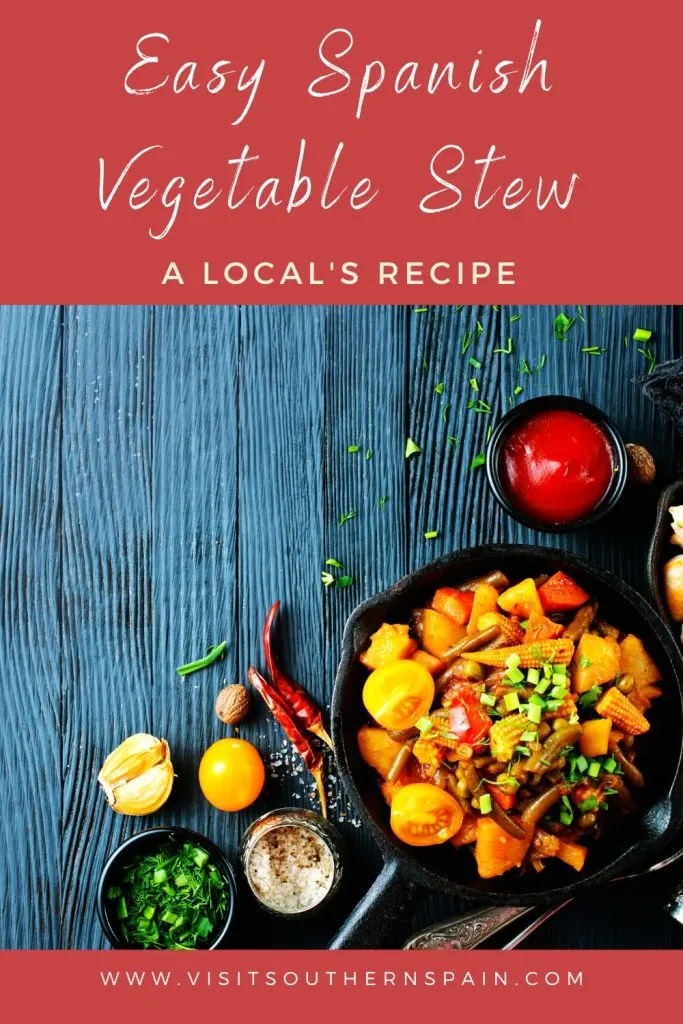
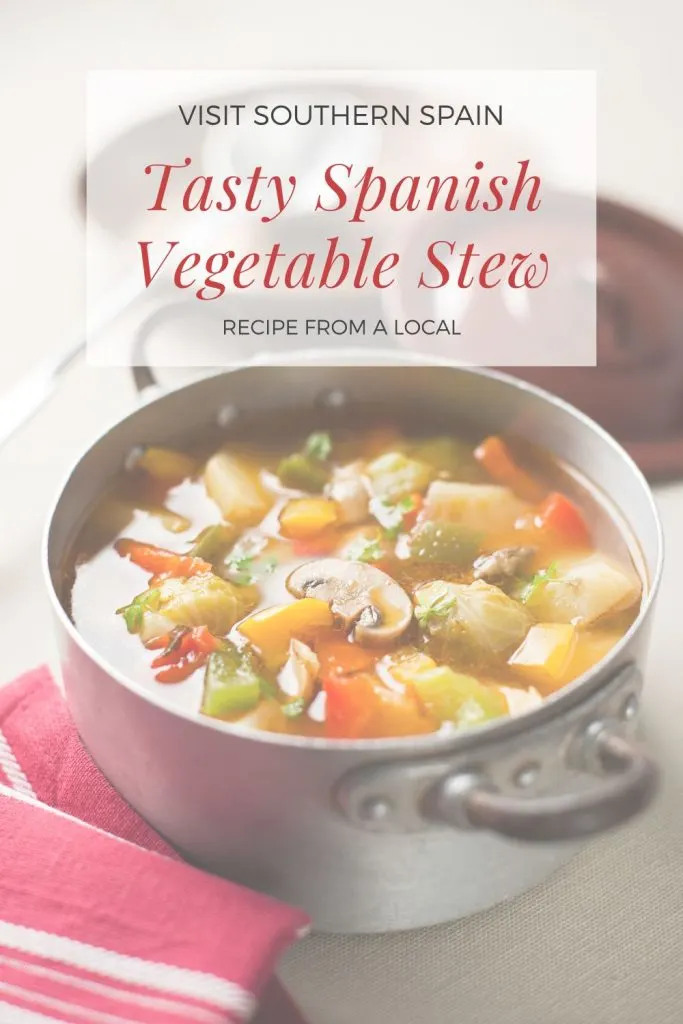

Hola, I’m Paulina! Together with my team, we are passionate about Southern Spain. Here we share all you need to know for great times in Southern Spain with the best places to visit, stay and, of course, the best food to eat.
Let’s dive in and explore Southern Spain’s outdoors, food and culture con pasión!

